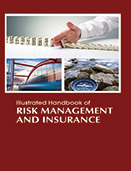Business and Management

Risk is a part and parcel of our daily lives. Risks are all around us whether we are aware of them or not. We may be familiar with some of the risks and then there are others, which may have escaped our attention. The knowledge of risk and its potential to cause loss creates uncertainty and gives rise to a feeling of insecurity which leads to worry amongst people and once they are worried enough they will give the problem some thought and try to find a solution and this is where Insurance comes in. The reasons for studying insurance are varied. For some, the study is undertaken in preparation for a career in the field. Others study to improve their knowledge of the subject in order to become more knowledgeable consumers. The average individual will spend a significant percentage of his or her disposable income on insurance over a lifetime, and one of the logical reasons for studying insurance is to learn how it can be used in personal financial planning. Still others study insurance as a part of the discipline of risk management, the managerial function that aims at preserving the operating effectiveness of the organization. In fact, risk management and insurance is a separate and distinct discipline, which draws on and integrates the knowledge from a variety of other business fields. In a micro sense, it is a discipline in which a variety of methodologies are brought to bear on a significant problem.
Illustrated Handbook of Risk Management and Insurance examines the concept of risk and explains how to evaluate and manage it. It provides risk financing alternatives, investigating the fundamental assumptions underlying insurance with insurance contract.
Risk, which is pervasive in business and in life, needs to be properly managed. This can be done in two ways, firstly by taking preventative measures to mitigate the risk, and secondly by funding the adverse consequences of risk, something which is typically and most successfully done through insurance. The area of Insurance and Risk Management examines the managerial principles applied to manage risk and the systems available to fund risk. The short-term insurance, life insurance, medical insurance, and retirement funding markets collect substantial sums of money to fund risk. These funds contribute to the economy and are managed through the separate discipline of business finance. There is thus a significant link between risk management and risk financing.
Illustrated Handbook of Risk Management and Insurance examines the techniques useful to corporations, organizations, and individuals in minimizing the potential financial and nonfinancial losses arising from their exposure to risk. These techniques range from traditional insurance products, to recent advances in corporate and insurer risk management (e.g., risk financing and retention, non-insurance risk transfer, catastrophe derivatives). The concentration also encompasses such topics as risk and insurance regulation, global risk management, and related public policy initiatives.